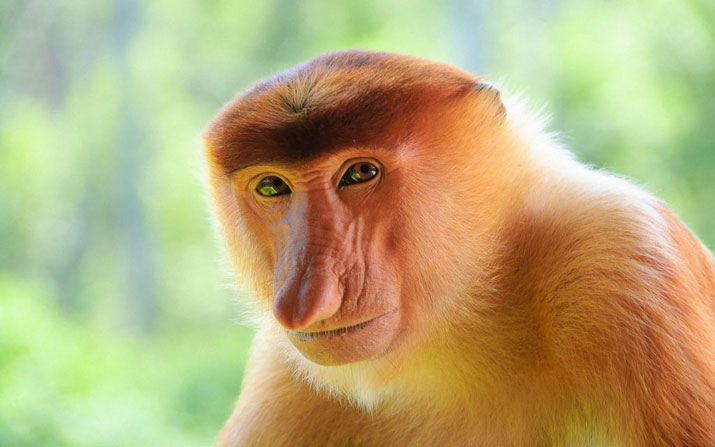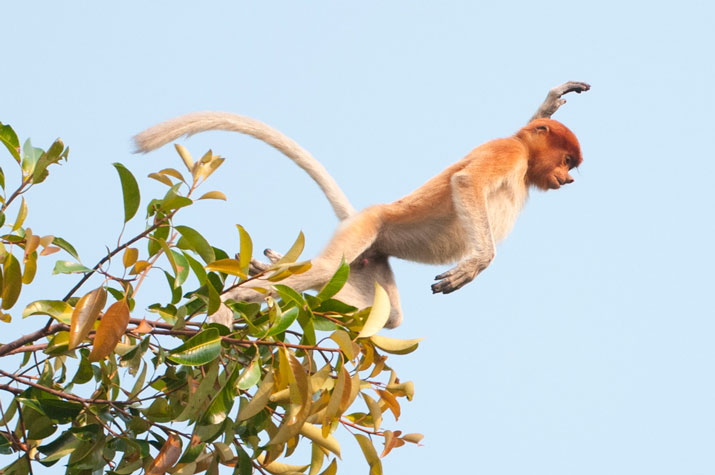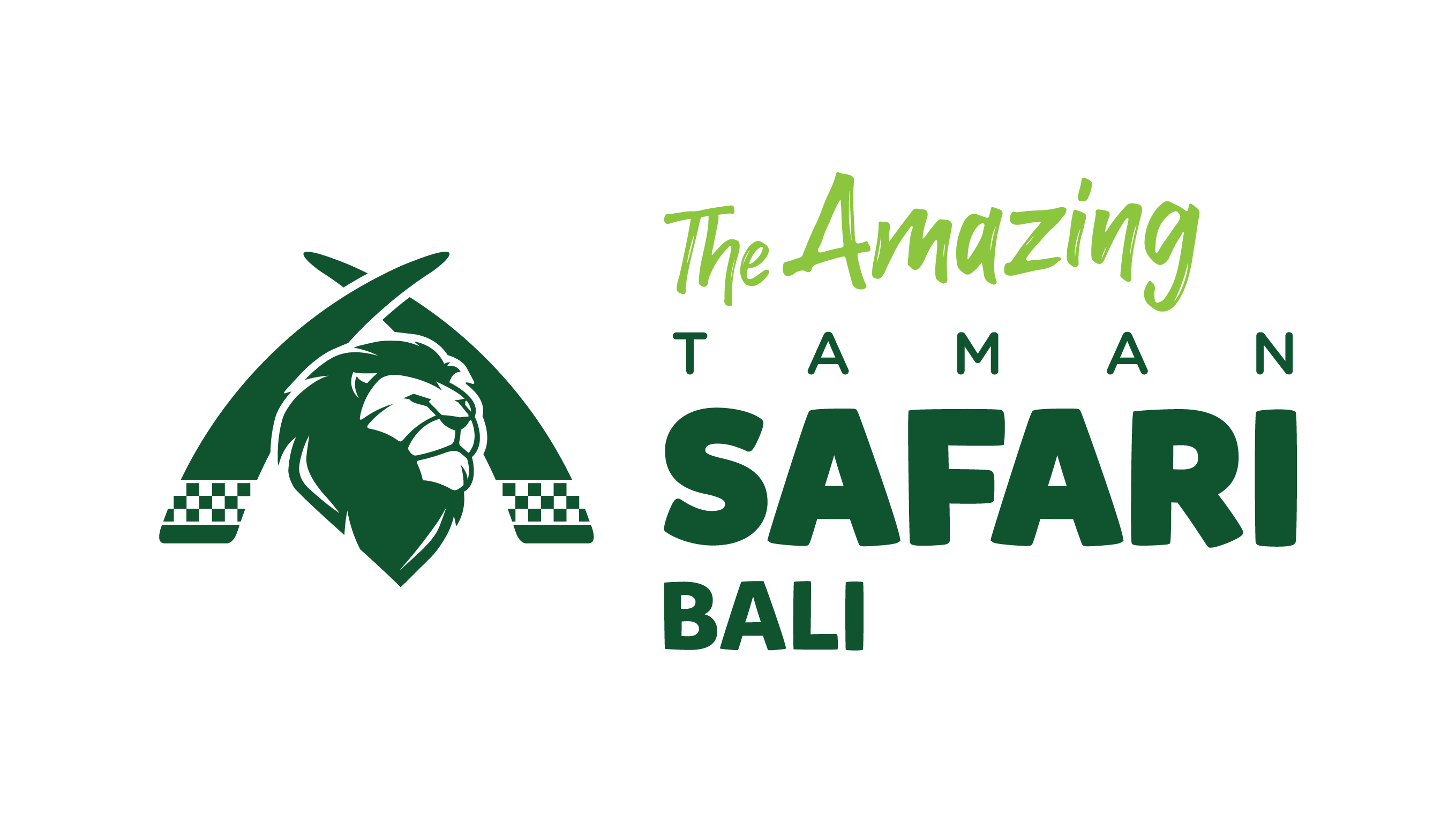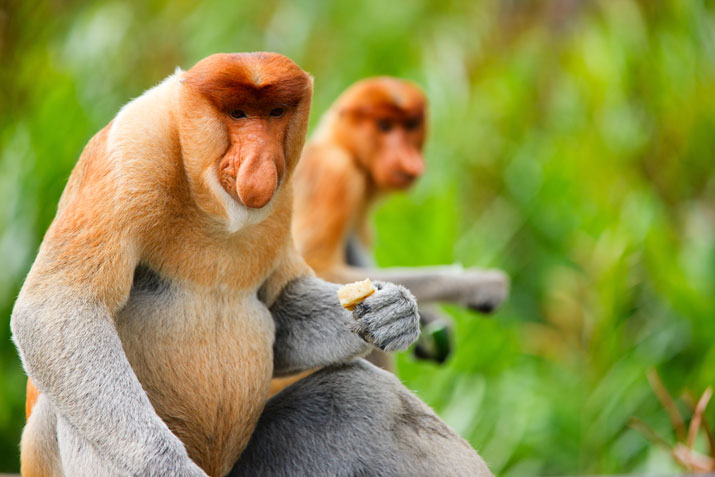The Proboscis Monkey is an Old World monkey that is most distinguishable by its prominent facial features. Old World monkeys are a family of monkeys that are native to the present day African and Asian continents and have certain distinctions such as their tails and dentition they have.
Proboscis monkeys can be found endemic to the Southeast Asian island of Borneo, where they live along the rivers and swampy mangrove forests. They are also known to coexist naturally with the Bornean Orangutan.

They are one of the larger species of monkeys that is native to the Asian continent, only superseded by the Tibetan Macaque and Gray Langurs in terms of their physical size. Speaking of their physical features, the Proboscis Monkey is characterized by having a long coat of fur, with bright yellow-orange sheens on their backs.
Newborns are born with blue coloring on their facial skin that gradually shifts to grey over a period of 2 – 3 months, adopting their normal peach-colored face upon reaching 8 months old.
Prominent features
A prominent feature of the Proboscis Monkey is their pendulous noses. Many studies have been conducted regarding the purpose and function of their nose. The male nose can reach lengths of up to 10 cm and hangs down lower than their mouths.
Females have a slightly smaller size, but are still considered large for monkeys. Younger monkeys have upturned noses, and gradually grow in size to the familiar proportions they are known for.
Their noses are have been observed to serve as an instrument for the males to resonate their vocalizations. This aids the male in searching for their mates. It is also an indicator for social dominance of the males, with the nose equating to larger body mass and a better chance to attract females.

Conservation
As of this writing the International Union for Conservation of Nature (IUCN) currently lists the Proboscis Monkey as endangered with the number of mature individuals steadily declining due to human development and habitat destruction. The development of riverbanks and mangroves has a significant impact on these monkeys as they rely on those features to supplement their daily survival.
The Proboscis Monkey is also hunted for bezoar stones, an ingredient used in tradition Chinese medicine that is secreted in the monkey’s intestines.
You can visit and witness the Proboscis Monkey yourself here in Bali Safari Park. They are our newest residential members here in the Safari. Don’t hesitate to ask our park rangers to learn more about the Proboscis Monkey!







